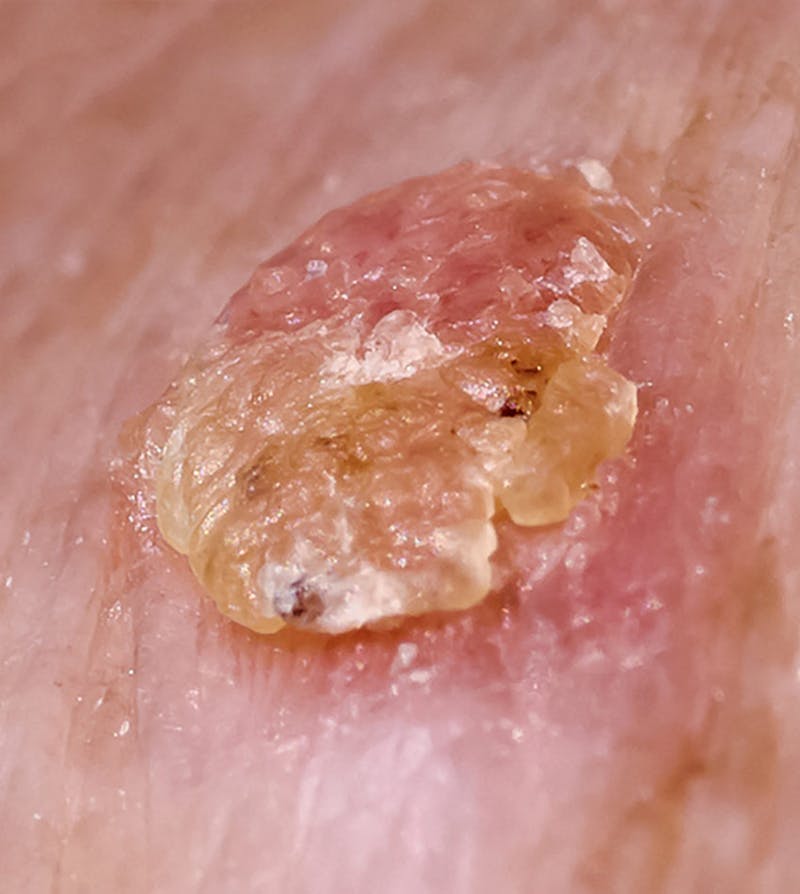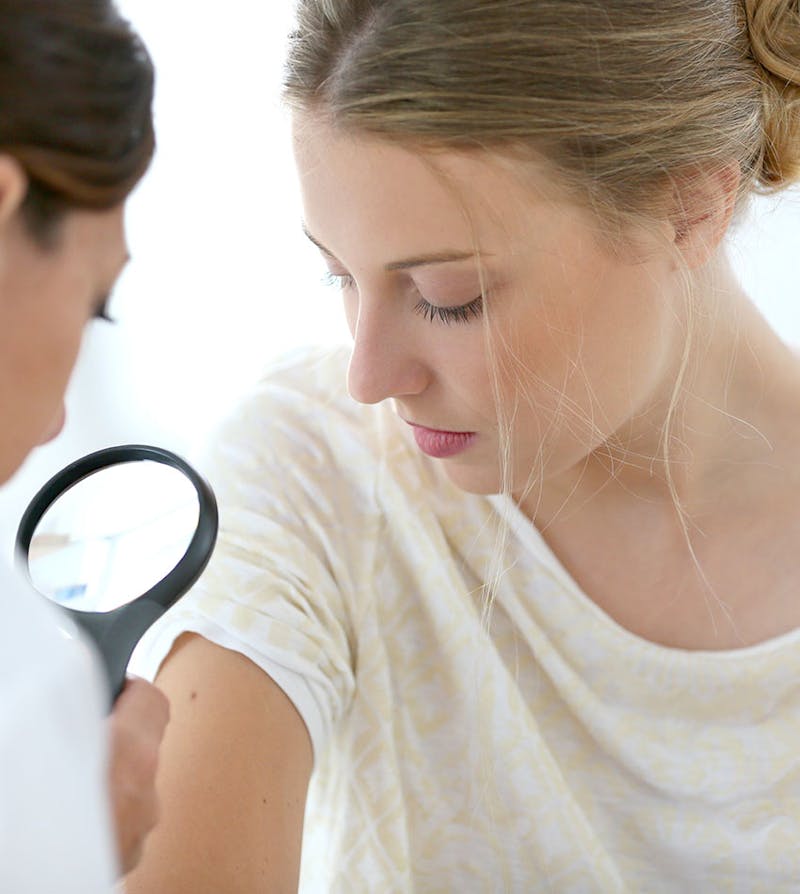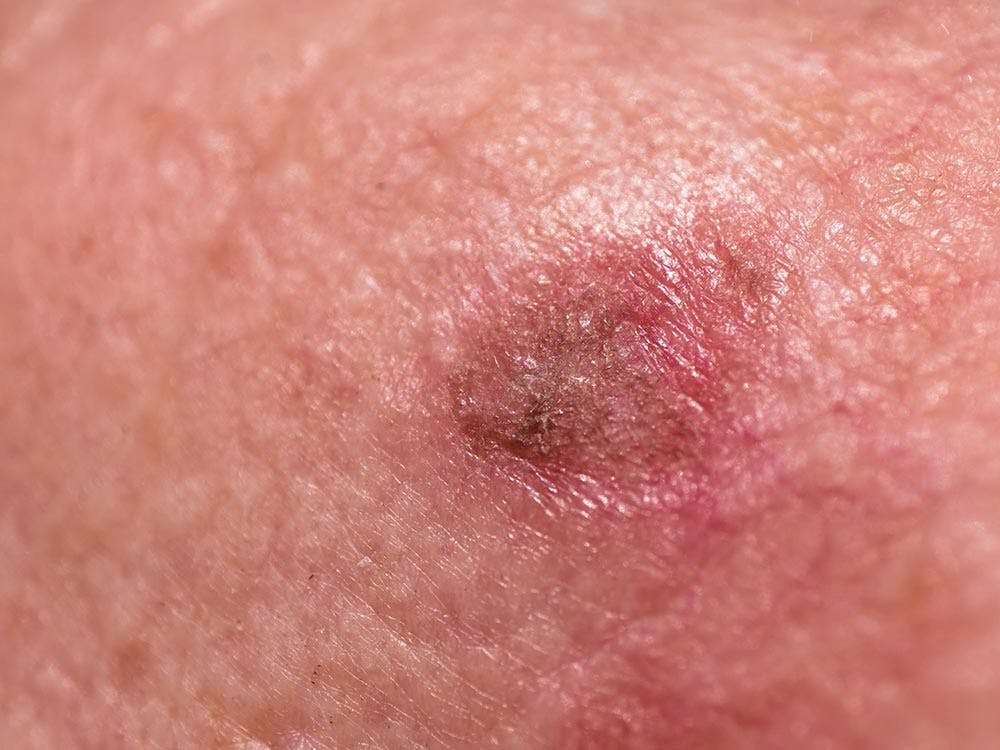What is actinic keratosis?
Actinic Keratoses are characterized by the formation of raised spots or plaques, originating from the middle layers of the epidermis (outer layer of the skin). These lesions typically appear in sun-exposed areas, including the head, neck, trunk, and extremities.

Are these lesions dangerous?
Actinic keratoses are lesions of concern, as they are considered to be pre-cancerous. They are precursors to Squamous Cell Carcinomas (SCC).
Although most actinic keratosis spots do not turn into SCC, a lot of SCCs develop from pre-existing actinic keratosis spots. Currently, there is no reliable clinical measure to determine which actinic keratosis spots turn into SCCs and which don't. It is estimated that around 0.03-20% of actinic keratoses turn into SCCs.
What do these lesions look like?
Actinic Keratosis lesions commonly appear as either single or multiple growths in areas of the body that have experienced significant sun exposure. These lesions typically manifest as scaly raised papules or plaques.
In some cases, Actinic Keratosis lesions may resemble smooth red outgrowths on the skin, or they may exhibit projections resembling horns that emerge from the center of the lesion. Additionally, these lesions can occasionally present as pigmented scaly patches larger than 1.5 cm in size.


What causes actinic keratosis?
The occurrence of actinic keratosis is influenced by several factors, including the degree of sun exposure and individual characteristics such as gender, age, and geographic location.
Research suggests that actinic keratosis is more frequently observed in males. Additionally, the incidence of actinic keratosis tends to increase with age. Moreover, regions with greater early-life exposure to ultraviolet light are associated with a higher prevalence of actinic keratosis.
What are the treatment options?
The treatment options for actinic keratosis vary depending on individual circumstances. Some individuals may choose to monitor the lesions, as they can remain stable or even resolve on their own.
Treatment approaches may include the use of prescription creams with destructive properties, such as imiquimod and topical 5-FU. Other methods such as cryotherapy (freezing the lesion), electrodessication (burning off the lesion), or surgical excision may be employed, particularly if there is a high suspicion that the lesions have progressed into squamous cell carcinoma (SCC). In cases where the lesions are located in aesthetically sensitive areas, complete excision of the lesion is often recommended to achieve the best cosmetic outcomes.
It is advisable to have a biopsy performed if any of the following criteria are met:
- The lesions are rapidly increasing in size.
- The lesions measure greater than 1 cm in size.
- The lesions become ulcerated.
- The lesions are tender.
- There is underlying induration (hardening) beneath the lesion.
A biopsy helps to confirm the diagnosis and determine appropriate treatment strategies. It is best to consult with a healthcare professional to discuss the most suitable treatment option for your specific situation.
What happens after the lesion is excised?
Once the lesion is surgically excised and the wound is closed using either permanent or dissolving sutures, the specimen is forwarded to a pathologist for microscopic examination. This step is crucial to verify the diagnosis and confirm that the entire lesion has been successfully removed.
Following the surgery, there will be a follow-up appointment at the office or clinic after approximately 5-7 days for facial lesions or 10-14 days for lesions on other parts of the body. During this visit, you will review the pathology report, assess the condition of your incision, and have any necessary sutures removed or trimmed.
I have been diagnosed with actinic keratosis. Now what?
If you have been diagnosed with actinic keratosis, it is essential to take proactive steps for your skin health. Given that actinic keratosis is often associated with sun damage, it is crucial to schedule yearly skin exams with a physician, particularly if you have multiple actinic keratosis spots or a history of previous skin cancers. These regular examinations will help monitor for any new lesions and ensure early detection and timely treatment if needed.
Furthermore, protecting your skin from further sun damage is of utmost importance. Make sure to wear hats and clothing that cover exposed skin when outdoors, and use sunblock to shield your skin from harmful ultraviolet (UV) rays. These preventive measures are essential for minimizing the risk of developing additional skin cancers.




